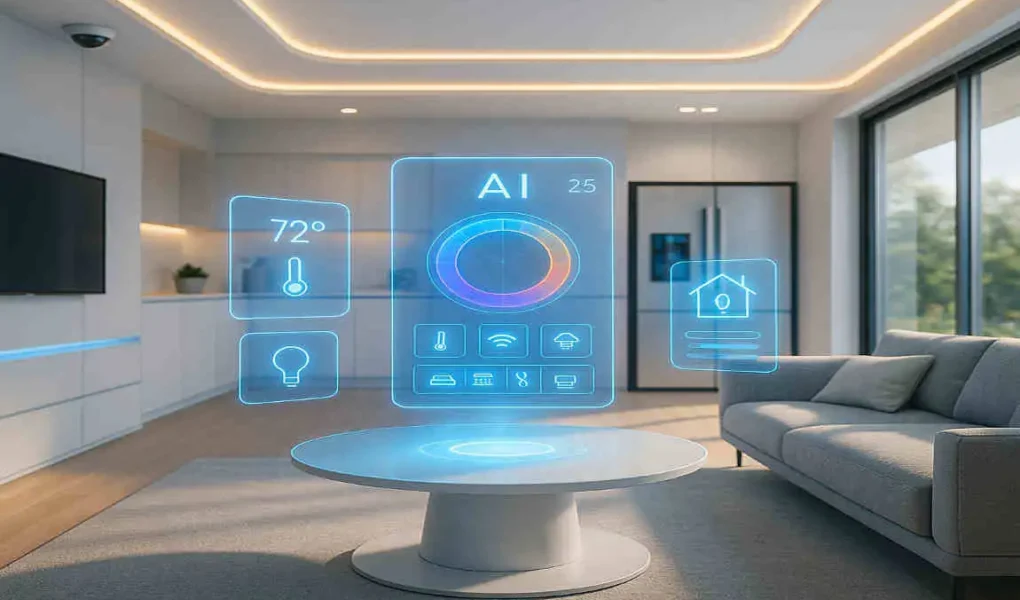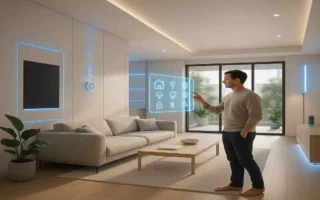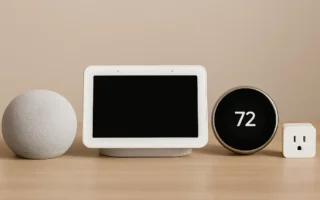The idea of a truly intelligent home, one that can predict your needs, automate daily tasks, and even keep you safe, no longer belongs solely to the realm of science fiction. AI-powered smart homes are here, transforming the way we live.
In today’s fast-paced world, where technology continues to infiltrate every aspect of our lives, AI-enabled smart homes represent the next big leap. But what exactly is a smart home in AI, and how does it differ from traditional automation?
What Is a Smart Home in AI? Defining the Concept
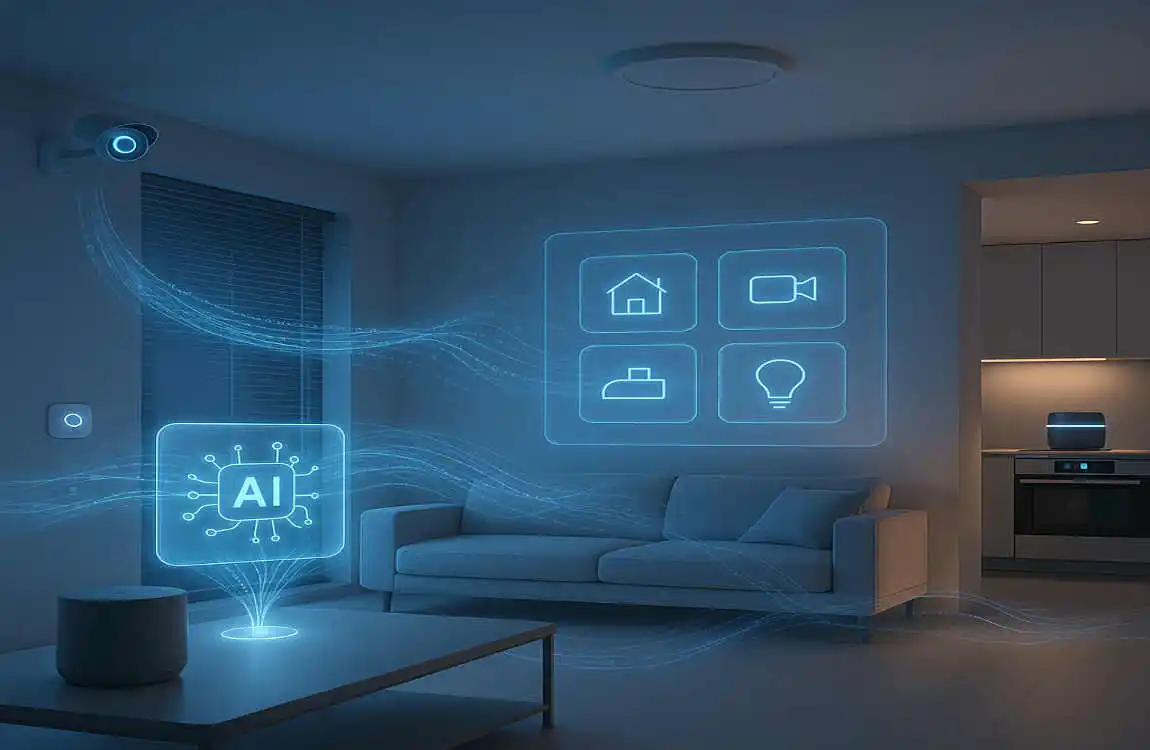
To put it simply, an AI smart home is an advanced version of a traditional smart home. It leverages the power of artificial intelligence (AI) to make homes not just automated but intelligent.
What Sets AI Smart Homes Apart?
Traditional smart homes rely on preset commands and rule-based automation. For example, a basic smart light system may turn on when you clap or at a scheduled time. But an AI-enabled smart home goes further by learning, adapting, and predicting your behaviors and preferences.
Key differentiators of AI smart homes include:
- Machine Learning (ML): AI smart homes learn from your behavior over time to provide personalized automation.
- Natural Language Processing (NLP): Voice assistants like Alexa or Google Assistant can understand and respond to conversational commands.
- Predictive Analytics: AI analyzes data from connected devices to anticipate your needs, such as adjusting the thermostat before you even think about it.
How Does AI Integrate with IoT?
The integration of AI and IoT (Internet of Things) lies at the heart of smart home intelligence. IoT devices like smart thermostats, cameras, and appliances collect data, while AI processes and uses this data to make intelligent decisions.
For example, a smart Security system equipped with AI-powered facial recognition can identify family members versus strangers and alert you to potential threats.
Key Technologies Behind AI Smart Homes
The backbone of any smart home lies in the technology that powers it. Here are some of the key advancements making AI smart homes a reality:
Machine Learning and Predictive Algorithms
Machine learning allows AI systems to analyze historical data and recognize patterns. For instance, your AI thermostat might learn your preferred temperature settings at different times of the day and adjust automatically.
Natural Language Processing (NLP)
Voice assistants like Amazon Alexa and Google Assistant have revolutionized how we interact with our homes. Thanks to NLP, these systems can understand natural speech, respond intelligently, and even initiate tasks without explicit commands.
Computer Vision and Image Recognition
AI-powered cameras equipped with computer vision can recognize faces, detect suspicious activity, and even read license plates. This technology enhances home Security and automation.
Edge Computing and Cloud AI
AI smart homes rely on a mix of edge computing (processing data locally) and cloud AI (processing data remotely). This hybrid approach ensures fast responses while enabling complex computations for tasks like predictive analytics.
IoT Sensors and Smart Devices
Devices like motion sensors, smart locks, and connected appliances form the physical infrastructure of a smart home. AI uses data from these devices to create seamless automation.
Examples of AI Smart Home Systems in 2025
- Amazon Alexa: Advanced conversational AI capabilities and better device integration.
- Google Nest AI: Enhanced energy management and Security features.
- Apple HomeKit: AI-driven focus on user privacy while delivering intelligent automation.
Intelligent Automation in Smart Homes: How AI Improves Everyday Life
AI doesn’t just make your home smarter—it makes your life easier, safer, and more comfortable.
Personalized Automation
Imagine waking up to your AI-powered coffee machine brewing your favorite coffee, your lights gradually brightening, and your thermostat warming up the room—all without lifting a finger. AI learns your habits and tailors automation to suit your preferences.
Energy Management
AI-powered thermostats like Google Nest can optimize energy usage by adjusting settings based on weather forecasts, occupancy, and user behavior. You save money and reduce your carbon footprint.
Advanced Security
AI-enabled cameras with facial recognition and anomaly detection can identify threats in real time. For example, they can alert you if an unknown face approaches your front door.
Health and Wellness Monitoring
Smart homes equipped with health-tracking devices can monitor vital signs, remind you to take medication, or even detect falls in elderly users.
Predictive Maintenance
AI can predict when an appliance is likely to fail and notify you before it happens. This prevents costly repairs and ensures smooth operation.
Benefits of AI-Powered Smart Homes
The advantages of AI-driven smart homes extend beyond convenience. Here’s how they benefit both homeowners and businesses:
For Homeowners:
- Convenience: Automation saves time and effort by handling routine tasks.
- Energy Savings: Optimized energy consumption lowers utility bills.
- Security: AI-enhanced features provide peace of mind.
- Accessibility: Elderly or disabled individuals can easily control their environment.
For Businesses:
- New Revenue Streams: Companies can offer AI-enabled products and services, such as installation and maintenance.
- Increased Property Value: Smart homes are attractive to buyers.
- Market Growth: The demand for smart home technology continues to rise, providing opportunities for innovation.
Challenges and Concerns of AI Smart Homes
Despite their benefits, AI smart homes face several challenges:
Challenge Explanation
Data Privacy AI systems collect vast amounts of personal data, raising privacy concerns.
Cybersecurity Risks Connected devices are vulnerable to hacking and Security breaches.
Integration Issues: Compatibility with older, non-smart devices can be difficult.
Cost Barriers: Smart home upgrades can be expensive, limiting accessibility.
Ethical Concerns Over-reliance on AI in private spaces raises questions about autonomy.
Future Trends in Smart Homes with AI for 2025 and Beyond
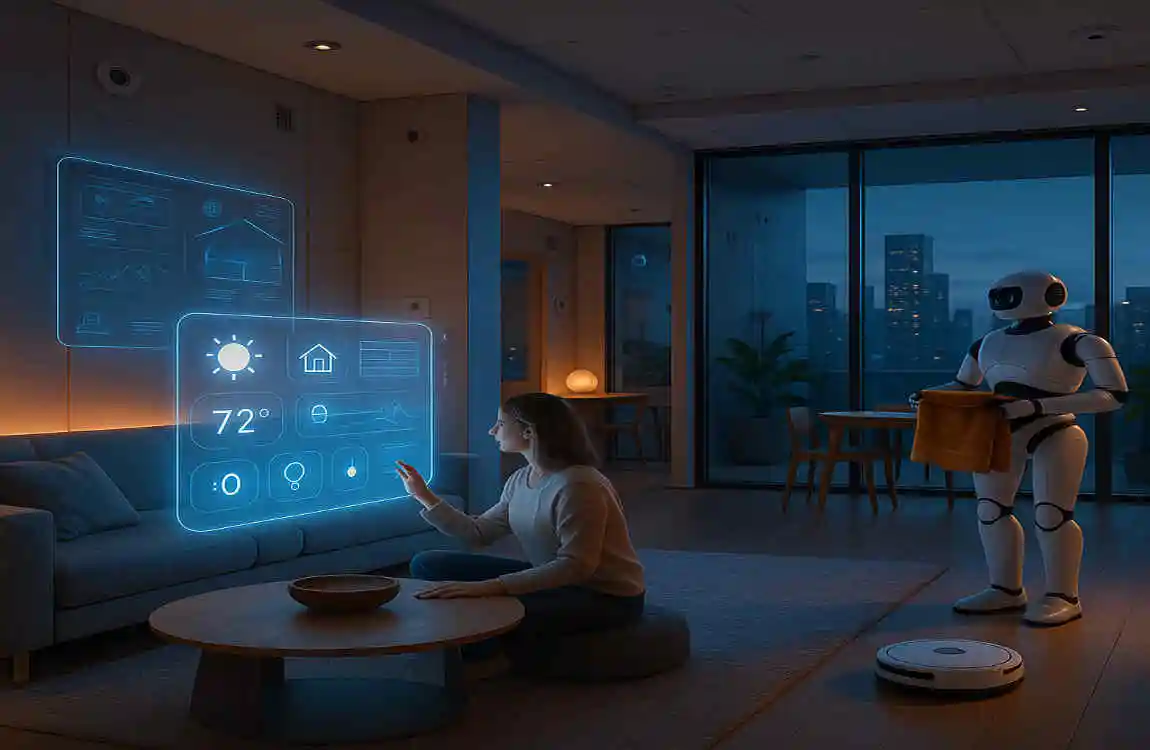
The future of AI smart homes looks bright, with several exciting trends on the horizon:
Deep Learning Advancements
AI will become even more adept at understanding complex human behaviors, providing seamless automation.
Smart Home Ecosystems
Homes will integrate with smart cities, creating interconnected systems for transportation, utilities, and more.
Ambient Computing
Invisible AI interfaces will make automation feel natural and unobtrusive.
Green Smart Homes
AI will drive energy efficiency and sustainability through smarter energy management.
Practical Guide: How to Upgrade Your Home with AI Smart Technology
Upgrading to an AI-powered smart home doesn’t have to be overwhelming. Follow these steps:
- Start Small: Begin with smart devices like a thermostat or voice assistant.
- Choose Compatible Platforms: Ensure devices work well together (e.g., Alexa, Google Nest).
- Prioritize Security: Use strong passwords and enable encryption for all devices.
- Set a Budget: Plan upgrades in phases to spread out costs.
- DIY vs. Professional Help: Decide whether to Install devices yourself or hire experts.

